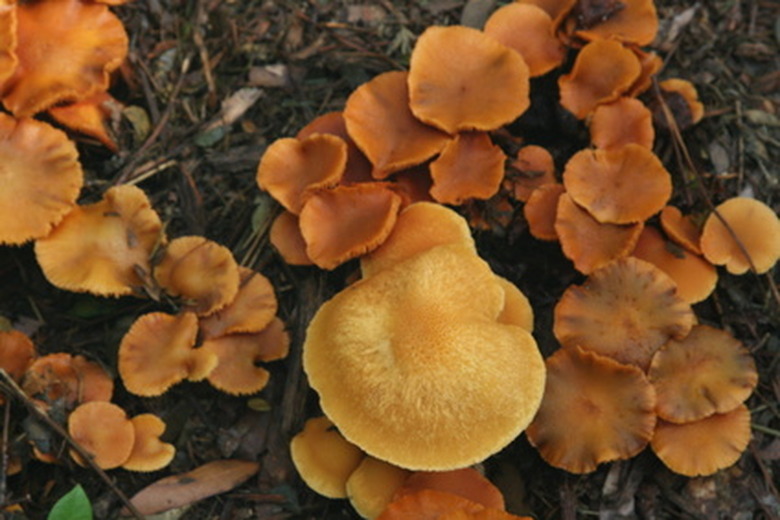Mushroom Hunting In Austin, Texas
During the rainy season, the Hill Country surrounding Austin in Texas becomes ripe for mushroom picking. Many species of edible mushrooms grow in this area, but you have to be somewhat savvy with mushroom knowledge before venturing out. Eating the wrong mushroom could create feelings of intoxication, or make you violently ill. Either way, it's best to arm yourself with the correct knowledge to prevent any mishaps.
Time Frame
Time Frame
The rainy season is the best time of the year to find wild mushrooms growing in the Hill Country. However, wild mushrooms can be found growing any time of the year as long as there has been sufficient rainfall. The only time mushrooms will not be found growing in the Hill Country is during a prolonged frost.
Geography
Geography
The geography of the Texas Hill Country is flat with rolling plains. It was once an ancient sea bed, under laid by a karst limestone bedrock. Springs and creeks cut through the limestone to form seasonal waterways. Thick clumps of trees grow close to water sources while grasses and woody shrubs grow on the open plains. Mushrooms grow under trees and shrubs, and on rotting logs and tree stumps. Right after a rainstorm, you will find many species of mushrooms that spring up magically over night.
Identification
Identification
Mushroom identification can be tricky. Many species look similar and it is difficult for skilled "mycologists" to tell the difference sometimes. It is best to always go with a guide book, and even a guide if possible, when collecting mushrooms. This is especially true if you want to collect them to eat. One of the best ways to identify mushrooms in the field is to perform a spore print. After picking a mushroom, place it gills down onto a piece of paper. After five minutes or so, the mushroom cap can be lifted and a spore print will be left on the paper. Field guides will offer spore print identification. This can be an effective way of identifying different similar looking mushroom species.
Gear
Gear
To collect mushrooms, you will need a good pair of hiking shoes, a paper bag, a Texas mushroom identification book, and paper for making spore prints. It is handy to have a small knife for cutting mushrooms growing off tree branches as well as a small shovel for digging larger specimens from the ground. Take into account the area you will be hiking through on your mushroom hunt. If it has just rained and there is much underbrush, you might want to consider bringing some sort of insect repellent as well.
Considerations
Considerations
If you are planning a mushroom hunting trip in a state park, review the rules and regulations at the ranger's desk before proceeding. Some parks do not allow anything to be picked or gathered for conservation purposes. If you are on private property, make sure you get explicit permission from the landowner before hiking on their property. Texas has very strict private property laws.
Warnings
Warnings
Mushroom identification can be difficult. Even if you are sure you have collected an edible mushroom, go through a couple identification steps before consuming it. Be sure and save a small portion of any consumed mushrooms for the poison center just in case you are wrong. There are many easily identifiable edible mushrooms out there, so if you are unsure of a mushroom's true nature, throw it back and go for one that is beyond suspect.
References
- Texas Mushrooms: A field Guide(1992), by Susan Metzler, Van Metzler
Cite This Article
MLA
Julian, Andrea. "Mushroom Hunting In Austin, Texas" sciencing.com, https://www.sciencing.com/mushroom-hunting-austin-texas-6534436/. 22 November 2019.
APA
Julian, Andrea. (2019, November 22). Mushroom Hunting In Austin, Texas. sciencing.com. Retrieved from https://www.sciencing.com/mushroom-hunting-austin-texas-6534436/
Chicago
Julian, Andrea. Mushroom Hunting In Austin, Texas last modified March 24, 2022. https://www.sciencing.com/mushroom-hunting-austin-texas-6534436/
